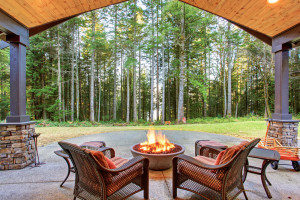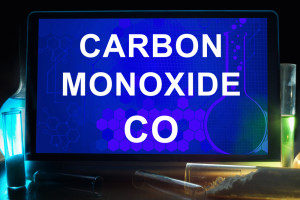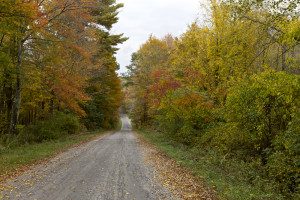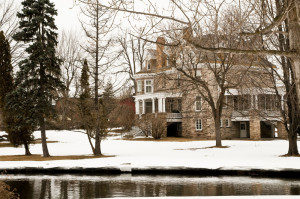 It is no secret that the sun can be damaging to the skin; causing wrinkles, and potentially causing skin cancer. But, we often overlook how impactful the sun can be on internal organs. The heat from the sun and associated dehydration can cause a host of life-threatening health problems. It’s important to learn about what heat can do to your body internally, how to treat it and ultimately, how to prevent it.
It is no secret that the sun can be damaging to the skin; causing wrinkles, and potentially causing skin cancer. But, we often overlook how impactful the sun can be on internal organs. The heat from the sun and associated dehydration can cause a host of life-threatening health problems. It’s important to learn about what heat can do to your body internally, how to treat it and ultimately, how to prevent it.
Heat Cramps
Heat cramps are a condition that causes muscle spasms and cramping, often as a result of being overheated or lacking electrolytes. Electrolytes are minerals that are essential to the body’s optimal functioning. They include potassium, sodium, magnesium and calcium. In a hot environment, many individuals sweat out a lot of electrolytes. Being dehydrated, or not drinking fluids that contain enough electrolytes can result in heat cramps.
Heat cramps may occur while working in a very hot environment, or several hours after the work has been completed. The muscle spasms associated with heat cramps can be very painful but are usually brief and intermittent. The best way to treat them is by rehydrating with fluids, electrolytes, and rest. If the cramps do not resolve, or nausea and vomiting prevent the restoration of fluids, it’s very important to seek professional medical attention.
Heat Exhaustion
Heat exhaustion represents another serious illness associated with high temperatures and dehydration. If not treated, heat exhaustion can lead to a heat stroke. The two different types of heat exhaustion are either related to water or salt depletion. Water depletion can cause an individual to feel weak, exceptionally thirsty, and can cause a headache. Loss of consciousness can also occur if not treated. Signs of salt depletion include dizziness, muscle cramping, nausea, and vomiting.
In general, those suffering from heat exhaustion may feel confused, fatigued, or dizzy. They may have a headache, muscle cramps, profuse sweating, and a rapid heart rate. Anyone suffering from these symptoms should immediately leave the heat to rest in a cooler area. They should then drink a lot of non-caffeinated fluids. Fans, ice towels, or cool showers are helpful in cooling down a person with heat exhaustion. If symptoms do not begin to subside after 15 minutes, the person should seek emergency medical help.
Heat Stroke
A heat stroke is the most severe form of illness caused by heat. It is a medical emergency, and if an individual is suspected to have heat stroke, it’s imperative to call 911. Heat stroke can cause serious damage to vital internal organs and the brain. Heat stroke occurs when an individual has been exposed to high temperatures for a significant length of time. It is usually accompanied by dehydration. These two elements can lead to a failing of the body’s natural temperature control system. Heat stroke occurs when the core body temperature is higher than 105 degrees Fahrenheit, and this is the definitive characteristic. Other symptoms of heatstroke may include dizziness, headache, dry skin, lack of sweating (regardless of heat), rapid heart rate, nausea, vomiting, confusion, loss of consciousness and even seizures. Treatment of heat stroke begins by first contacting emergency medical help. Waiting can be fatal. While waiting for help to arrive, make the effort to begin to cool the individual’s body by using fans, wetting their skin with cool water, applying ice packs to key areas like underarms, neck, and back or immerse the individual in cool water. Heat stroke is most common in older people, those who don’t drink enough water, and those who drink too much alcohol.
Stay Hydrated!
Dehydration and heat are the key causes of each of the above heat illnesses. It’s incredibly important to stay hydrated during hot weather and when exercising. The most obvious way to stay hydrated is to drink adequate amounts of water during hot weather and during exercise. The general recommendation is to drink at least eight eight-ounce glasses of water daily. This may change depending on the individual, the temperature, and the activity. Eating foods high in electrolytes and water can help you stay hydrated as well as aid in the recovery of dehydration. Fruits and vegetables typically contain a high water content as well as vitamins and minerals like sodium and potassium. If food isn’t available, a sports drink or other fluid replacement drink will contain the electrolytes that can help your body restore its fluid balance. Remember to drink more fluid than you’re expelling. If you’re sweating excessively, you will need to drink double the fluid to regain what was lost in sweat. Don’t ever confuse caffeinated or alcoholic beverages as hydrating fluids. They contribute to more frequent urination and actually may contribute to dehydration. Do your body a favor, drink adequate amounts of water, especially during hot weather or while exercising.
These ailments are not only serious, but symptoms can creep up on you very quickly without warning. The last thing you want is faulty health insurance when you or a loved one is in need of emergency medical care. Take the proper precautions to protect your body this summer and call Waitte’s Insurance Agency at (860) 886-1961 to review your current health insurance policy so that your family is covered while trying to ‘beat the heat’.

 Marriage is far more than the joining of two individuals into one couple. Not only are two people joining their personal lives when they marry, they are also combining their finances and expenses. Many people do not realize it, but getting married prompts many changes to their auto insurance rates?
Marriage is far more than the joining of two individuals into one couple. Not only are two people joining their personal lives when they marry, they are also combining their finances and expenses. Many people do not realize it, but getting married prompts many changes to their auto insurance rates? Summer days lead to cool nights that are perfect for cozying up to a warm fire with your family and friends. The smell of s’mores is in the air, and some of you may even be roasting your marshmallows the old fashioned way – on a stick. There is nothing more relaxing than hearing the crackle of firewood and the sound of laughter as you look up at the stars. There is also nothing more terrifying than a fire that has become unruly or is emitting noxious gasses due to the materials that are being burned.
Summer days lead to cool nights that are perfect for cozying up to a warm fire with your family and friends. The smell of s’mores is in the air, and some of you may even be roasting your marshmallows the old fashioned way – on a stick. There is nothing more relaxing than hearing the crackle of firewood and the sound of laughter as you look up at the stars. There is also nothing more terrifying than a fire that has become unruly or is emitting noxious gasses due to the materials that are being burned. Aggressive dogs pose serious threats to the community and are far more prevalent than one would think. In 2013, one-third of all homeowners’ insurance liability claims paid was due to dog bite claims. Families with “bully breed” dogs, such as pit bulls and Rottweilers may find themselves unable to obtain homeowner’s insurance or having to pay higher premiums as these dogs have higher aggressiveness statistics. Dog attacks can be prevented by appropriate training and raising of the dog. It’s important to understand some key dog-training principles to raise a safe, friendly dog.
Aggressive dogs pose serious threats to the community and are far more prevalent than one would think. In 2013, one-third of all homeowners’ insurance liability claims paid was due to dog bite claims. Families with “bully breed” dogs, such as pit bulls and Rottweilers may find themselves unable to obtain homeowner’s insurance or having to pay higher premiums as these dogs have higher aggressiveness statistics. Dog attacks can be prevented by appropriate training and raising of the dog. It’s important to understand some key dog-training principles to raise a safe, friendly dog. While most people know that homes are required by law to have smoke detectors, which quickly sense smoke in case of a fire and alert the residents to ensure a quick response, fewer know that the law also requires carbon monoxide detectors. That’s because carbon monoxide is a lesser-known danger than fire – but, in some cases, a much more potent one.
While most people know that homes are required by law to have smoke detectors, which quickly sense smoke in case of a fire and alert the residents to ensure a quick response, fewer know that the law also requires carbon monoxide detectors. That’s because carbon monoxide is a lesser-known danger than fire – but, in some cases, a much more potent one. Chances are you couldn’t wait to get your driver’s license when you turned 16. However, you probably never guessed that there would be so many steps you had to take before you could get on the road, or that even after receiving your license, you still have to navigate numerous laws and restrictions until you turn 18. Teen driving may be difficult, but this guide can help clarify a few questions you may have.
Chances are you couldn’t wait to get your driver’s license when you turned 16. However, you probably never guessed that there would be so many steps you had to take before you could get on the road, or that even after receiving your license, you still have to navigate numerous laws and restrictions until you turn 18. Teen driving may be difficult, but this guide can help clarify a few questions you may have. Every fall, while the rest of the country is lamenting the end of summer and dreading the coming of winter, New England is experiencing a uniquely beautiful experience – the gradual shift from summer to fall foliage throughout the region’s forests. This seasonal event brings vibrant hues of red, orange, and yellow to the leaves of trees throughout the state of Connecticut, and because of their widespread nature, the best way to enjoy them is by car. Thankfully, the state is full of scenic routes, all of which become even more beautiful in fall when the leaves change color. This fall, head out for a drive along these top five scenic routes:
Every fall, while the rest of the country is lamenting the end of summer and dreading the coming of winter, New England is experiencing a uniquely beautiful experience – the gradual shift from summer to fall foliage throughout the region’s forests. This seasonal event brings vibrant hues of red, orange, and yellow to the leaves of trees throughout the state of Connecticut, and because of their widespread nature, the best way to enjoy them is by car. Thankfully, the state is full of scenic routes, all of which become even more beautiful in fall when the leaves change color. This fall, head out for a drive along these top five scenic routes: As the days grow shorter and the air grows colder, people around the country experience the telltale signs of the fall season. Along with the approach of the holidays and the changing color of the leaves, however, you can also expect unpredictable weather patterns; from sudden storms to early snowfall. Especially in New England, there is no telling when temperatures may drastically drop – an event that can have significant impacts on your home.
As the days grow shorter and the air grows colder, people around the country experience the telltale signs of the fall season. Along with the approach of the holidays and the changing color of the leaves, however, you can also expect unpredictable weather patterns; from sudden storms to early snowfall. Especially in New England, there is no telling when temperatures may drastically drop – an event that can have significant impacts on your home. As one of the first areas to be colonized by European settlers, as well as the site of Native American activity for thousands of years, it comes as no surprise that Connecticut has a long and storied history – and where there is history, there are hauntings. Today, with Halloween approaching, you can visit numerous haunted sites across the state, absorbing the atmosphere and quite possibly getting the scare of your life. However, even among Connecticut’s many haunted places, there are a few that stand out for being exceptionally spooky. Take a look at 5 of the most haunted places in Connecticut.
As one of the first areas to be colonized by European settlers, as well as the site of Native American activity for thousands of years, it comes as no surprise that Connecticut has a long and storied history – and where there is history, there are hauntings. Today, with Halloween approaching, you can visit numerous haunted sites across the state, absorbing the atmosphere and quite possibly getting the scare of your life. However, even among Connecticut’s many haunted places, there are a few that stand out for being exceptionally spooky. Take a look at 5 of the most haunted places in Connecticut. In New England, fall is in full force; the leaves have changed colors, Thanksgiving preparations have begun, and the air is slowly getting colder and colder as winter approaches. While these changes may signal the approach of the holiday season, however, the colder weather also signifies another change: the increased danger to your car or other vehicles.
In New England, fall is in full force; the leaves have changed colors, Thanksgiving preparations have begun, and the air is slowly getting colder and colder as winter approaches. While these changes may signal the approach of the holiday season, however, the colder weather also signifies another change: the increased danger to your car or other vehicles.